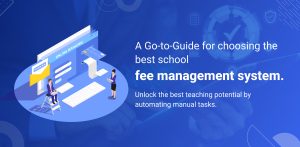COVID-19 has impacted every sector around the world. The education sectors of India, just as across the world, are severely affected by the same.
The year 2020 shall always be remembered as one of the most difficult times in history when schools, colleges and educational institutes across the world were shut down.
The education sector has been battling to survive the crises with an unconventional approach. We have been overcoming the challenges to diminish the threat of the pandemic by digitisation and automation. This has worked as a catalyst for the educational institutions to grow and opt for platforms and techniques, which they were unsure of earlier.
We find it laudable how quickly and efficiently the education sector adapted to the new normal.
Here are a few insightful highlights into all the need-of-the-hour changes the pandemic has brought to ensure seamless education.
1. Extensive distance learning tools
During times like these, ensuring learning continuity for the students is of utmost priority to schools. Schools have moved online using tools such as Zoom, Google Meet, Microsoft Teams to ensure that the classes could continue with no disruption.
2. Online assessment with LMS
While some schools have cancelled exams, most have opted for alternative assessment methods, such as online assignments and exams. In this, students’ progress is monitored with the help of
the learning management system. This makes rapid learning assessments possible and helps to recognise learning gaps sooner than in traditional methods.
3. Support for the teacher’s needs
Teachers were promptly expected to implement online classes without sufficient guidance, training, or resources. Teachers were unequipped to support this continuity of learning. They were compelled to adapt to modern instructing methodologies overnight. This emphasised the need to support teachers in basic digital skills for delivering education.
4. Appreciation for Educators
During the continued struggle to learn from home, across the world, there was an outpour of gratitude for teachers, their skills, effort and their role in student well-being. The pandemic forced the community to identify that educational institutions and teachers play a significant role in the pupil’s academic life and helping them build relationships with their peers.
5. Increased parental role in a child’s education
Parents no longer play the role of mere spectators in children’s’ education. However, the pandemic has forced many parents to take a more active role in the education of their students. Supervising students during online classes has made parents and teachers allies as they work alongside to meet students’ pedological goals.
Today, the need of the hour is to embrace changes in methods of delivering quality education, with the use of digital resources such as learning management software LMS. Another fundamental lesson is the need to give the teachers adequate training and support.
Visit
www.myclassboard.com or click here to book a quick demo! 











